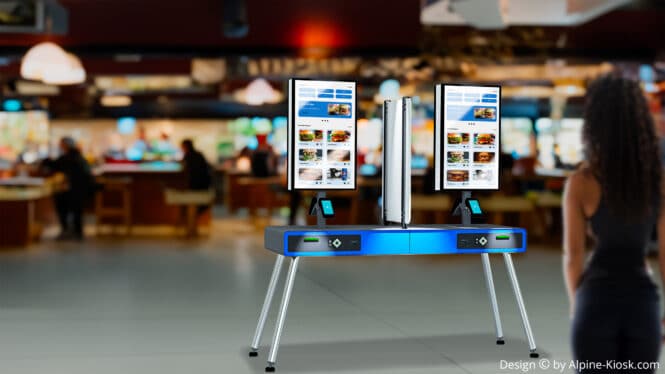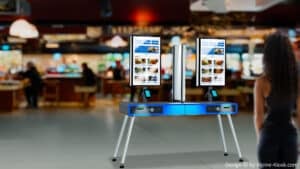
Fast Food Ordering – What Do You Like?
After a busy NRF 2024 show, I found myself with hours to wait at JFK airport. Needing a quick meal, I headed to a well-known burger chain. Instead of the usual counter, two tabletop kiosks were the only way to order. A line of 10-15 people stretched in front of them, with another group waiting for their food.
As I waited, I observed two older women and a mother with her daughter struggling with the touchscreen interface. Language barriers and unfamiliarity with the system slowed them down significantly.
My usual instinct would be to help, but as a self-service professional, I was curious to see how the restaurant would handle this.
When the prepared food line cleared, you’d expect staff to step in and assist the kiosk users.
Instead, they opened a traditional cash register and called me over.
“Your order, please!”
Caught off-guard, I was disappointed.
With a kiosk, I enjoy browsing all the potential customizations at my leisure: different bun options, unique sauces, tempting sides.
I love experimenting with toppings and finding new flavor combinations. Instead, with no menu details in sight, I chose a basic burger, fries, and Coke.
This felt rushed and impersonal, and the restaurant missed out on upsell opportunities I often explore when using a self-service interface.
What Makes Service Personal?
In my rushed situation, the lack of a familiar self-service kiosk is what actually felt impersonal. I was denied the chance to engage with the menu on my own terms, making choices guided by visuals and exploring what sounded appealing.
Being thrust into a hurried verbal order felt less like personalized service and more
like simply being processed to reduce the queue.
This highlights an irony – sometimes the ability to interact at our own pace with a
well-designed interface creates a more satisfying and personal experience than
quick, potentially impersonal human interaction.
The Evolving Definition of Service
This airport experience highlights the ongoing discussion around self-service. It offers undeniable advantages:
- Speed: Skip lines and avoid waiting during busy times.
- Accuracy: Your order goes directly to the kitchen, reducing errors.
- Control: Explore the menu at your own pace and customize your meal.
- Upselling Opportunities: Visuals and easy navigation can entice customers to add sides, drinks, or desserts.
- Privacy: Order without pressure and take your time, especially helpful for those with decision anxiety.
- Less Language Barrier: Multilingual interfaces accommodate diverse communities.
However, the warmth of human interaction is valuable:
- Personalized service: A genuine smile and friendly chat can improve your experience.
- Recommendations: Knowledgeable staff can guide you to dishes you might enjoy.
- Flexibility: Easily change your mind, modify items, or discuss special requests.
Preferences often depend on the situation and age.
Younger individuals often prefer technology, while older customers, those less comfortable with technology, or people in groups might favor traditional interaction.
My airport experience showed that even when self-service is designed for speed, ignoring the needs of some customers creates a less welcoming experience for everyone.
The Future: Balancing Personalization and Efficiency
Restaurants face the challenge of delivering personalized experiences while maximizing speed. That’s where a hybrid model shines:
- Self-Service Efficiency: Customers who prefer the ease and control of kiosks can quickly get their orders in.
- Optimized Staffing: A single, well-trained staff member can monitor kiosks, ensuring a smooth experience and offering prompt assistance to those who need it.
- Personalized Enhancements: Staff remain dedicated to offering helpful recommendations, addressing customizations, and making every diner feel valued.
The way we order food changes, but the goal remains a positive experience for every customer. By blending technology and a customer-centric focus, restaurants can create a welcoming environment that maximizes efficiency and ensures diners walk away satisfied.
By Christoph Nussbaumer, Alpine Kiosk


